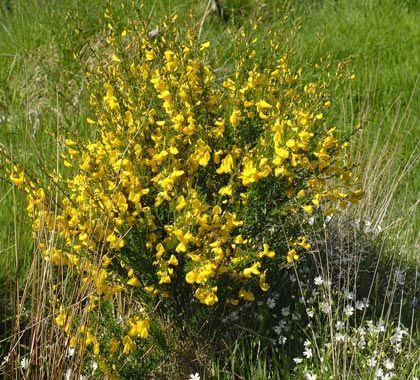


Most of the species have yellow flowers, but a few have white, orange, red, pink or purple flowers. Cytisus Scoparius Yellow Broom Genista is a compact variety of Genista. These genera are all closely related and share similar characteristics of dense, slender green stems and very small leaves, adaptations to dry growing conditions. It grows up to 3 feet tall with a 2-foot spread. All genera in this group are from the tribe Genisteae (syn. Splitbeard Bluestem is a native ornamental warm-season perennial bunchgrass in the Poaceae family. The brooms belong to the subfamily Faboideae of the legume family Fabaceae, mainly in the three genera Chamaecytisus, Cytisus and Genista, but also in five other small genera (see box, right). It is also the hardiest broom, tolerating temperatures down to about -25☌.

It makes a shrub about 1–3m tall, rarely to 4m. In late summer, its pea-pod like seed capsules burst open, often with an audible pop, spreading seed from the parent plant. Broomcorn is not actually a corn but is an ornamental sorghum - distantly related to sugarcane and big bluestem grass interestingly enough. Like most brooms, it has apparently leafless stems that in spring and summer are covered with golden-yellow flowers. One can find it in sunny sites, usually on dry, sandy soils. The most familiar is common broom, that grows in northwestern Europe. Upright, deciduous shrub about 1. Many brooms (though not all) are fire-climax species, adapted to regular stand-replacing fires which kill the above-ground parts of the plants, but create conditions for regrowth from the roots and also for germination of stored seeds in the soil. The greatest diversity one can find in the Mediterranean region. Brooms are a group of evergreen, semi-evergreen, and deciduous shrubs.Īll the brooms and their relatives (including Laburnum and Ulex) grow in Europe, north Africa and southwest Asia.


 0 kommentar(er)
0 kommentar(er)
